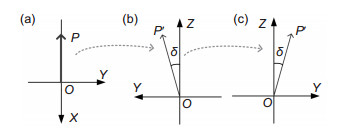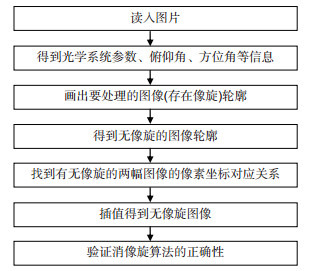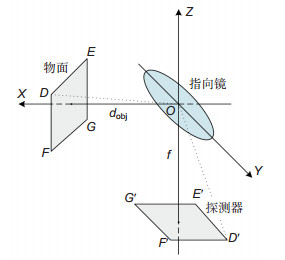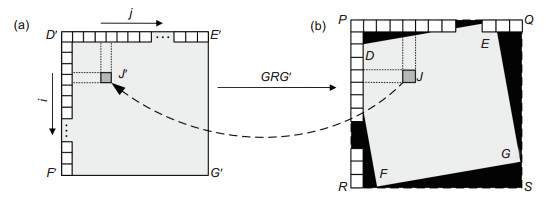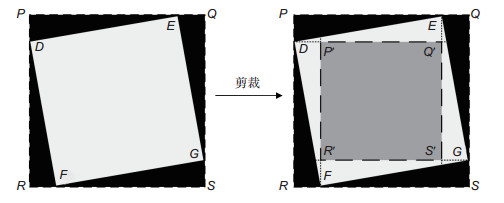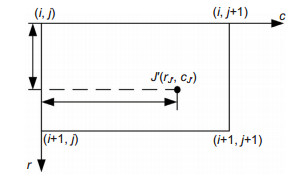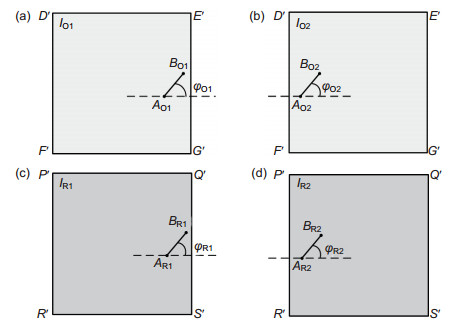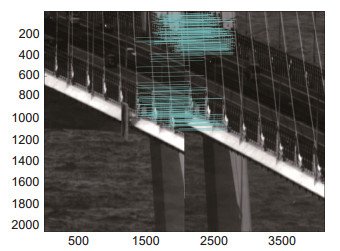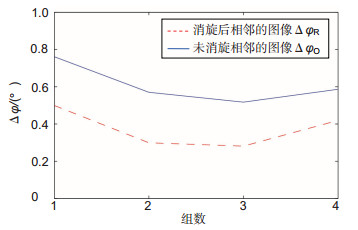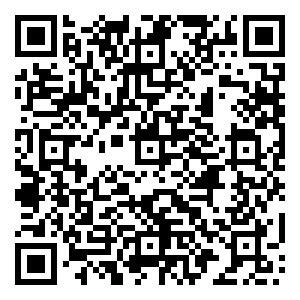Elimination method of image rotation for geostationary radiometer and its verification method
-
摘要
我国正处于海洋高频观测的发展阶段,作为海洋观测的一个重要途径,静止轨道海洋成像辐射计的发展具有重要的战略意义。本文分析了静止轨道二维指向面阵成像光学系统所引入的像旋误差,提出了针对面阵误差的图像消旋算法,并且给出了消旋算法有效性的验证方法。经验证,本文提出的消旋算法,消除了39%像面旋转的影响,可以大大提高二维指向成像的地理定位精度,提升遥感仪器的准确度,因此本工作为二维指向面阵成像系统后续图像处理奠定了基础。

Abstract
Our country is at a developing stage in the area of high-frequency observation of oceans. As an important approach of observation of ocean, the development of the geostationary ocean radiometer is of great significance. In this paper, we analyze the image rotation errors introduced by the optical system of plane imaging with two-dimensional pointing reflection mirror, propose the image rotation elimination method for two-dimensional scanning and the verification method. It is proved that the proposed rotation elimination method can reduce 39% of image rotation. This indicates that the algorithm greatly improve the accuracy of two-dimensional directional imaging and improve the accuracy of remote sensing instruments. Therefore, the work lay a good foundation for image processing in two-dimensional pointing plane imaging system.
-
Overview

Overview: China has 18000 km coastline and the oceans have a vital impact on our climate, agriculture and military. At present, the observation of the oceans in our country is still in the polar orbit observation stage with a revisit cycle of 1~2 days. However, tides, currents, storm surges, oil spills and military activities often change greatly in one day. Therefore, the development of Geostationary Ocean Radiometer is imperative. The geostationary ocean radiometer can perform high-frequency observations of a specific area of ocean. However, due to the influence of the optical system, the observing field is small and additional scanning equipment is needed to expand the observation field. Two-dimensional pointing mirror with plane detector and staring imaging is a better way. Two-dimensional pointing mirror has small size, light weight, and can rotate flexibly. However, the rotation of two-dimensional pointing mirror about its tilt and azimuth axes introduces errors in imaging system, including non-linear errors and image rotation errors.
The purpose of this paper is to eliminate the image rotation errors introduced by two-dimensional pointing mirrors. The image rotation elimination method has also been proposed before, including optical method and image processing method. They are often used in the image rotation of polar orbiting satellites, aimed at linear array detectors and have obvious effects of image rotation elimination, but no quantitative verification method is given. The proposed image rotation elimination method is aimed at the image rotation errors introduced by the two-dimensional pointing plane imaging optical system of geostationary orbit. In this paper, we analyze the image rotation errors, propose the elimination method according to the correspondence between objects and images, give the image rotation elimination formula, and use the bilinear interpolation method to get the refined image. At the same time, we extract the SIFT feature points of the test images, give the corresponding quantitative verification method based on the degree of rotation between feature points of adjacent images. According to images taken by the Geostationary Ocean Radiometer model machine, it is proved that the proposed rotation elimination method can reduce 39% of image rotation errors. This indicates that the algorithm greatly improve the geographical accuracy of two-dimensional directional imaging and improve the accuracy of remote sensing instruments. Therefore, the work lay a good foundation for image processing in two-dimensional pointing plane imaging system.
-

-
表 1 本文用到的系统参数
Table 1. System parameters in this paper
内容 参数 波段 可见近红外 轨道高度/km 35800 探测器像元大小 12 μm×12 μm 面阵规模 2048×2048 子图像个数 5×5 焦距/mm 1714 角分辨率/μrad 7 子图像视场 0.82°×0.82° 表 2 消旋前后的Δφ
Table 2. Δφ for image rotation elimination unfinished and finished
组数 ΔφO ΔφR 减小比例/% 1 0.7613 0.4992 34.43 2 0.5702 0.2993 47.51 3 0.5175 0.2812 45.66 4 0.5866 0.4196 28.47 -
参考文献
[1] 张锷, 龚惠兴.消除45°旋转扫描反射镜像旋转系统的研究及应用[J].红外与毫米波学报, 1999, 18(2): 125-132. http://kns.cnki.net/KCMS/detail/detail.aspx?filename=hwyh902.005&dbname=CJFD&dbcode=CJFQ
Zhang E, Gong H X. Research and application of system for offsetting image rotation from 45° rotating scan mirror[J]. Journal of Infrared and Millimeter Waves, 1999, 18(2): 125-132. http://kns.cnki.net/KCMS/detail/detail.aspx?filename=hwyh902.005&dbname=CJFD&dbcode=CJFQ
[2] 王岱, 李晓燕, 吴钦章.某光测设备上消像旋的设计[J].光电工程, 2012, 39(1): 108-112. http://www.oee.ac.cn/CN/abstract/abstract67.shtml
Wang D, Li X Y, Wu Q Z. Design of eliminating image rotation on opto-electronic imaging tracking and measuring device[J]. Opto-Electronic Engineering, 2012, 39(1): 108-112. http://www.oee.ac.cn/CN/abstract/abstract67.shtml
[3] 李淑英, 周世椿.二维指向镜的成像特性分析[J].光电工程, 2008, 35(5): 17-22. http://www.oee.ac.cn/CN/abstract/abstract936.shtml
Li S Y, Zhou S C. Analysis of the imaging characteristics of the two-dimensional pointing mirror[J]. Opto-Electronic Engineering, 2008, 35(5): 17-22. http://www.oee.ac.cn/CN/abstract/abstract936.shtml
[4] 惠彬, 裴云天, 王淦泉.二维扫描镜扫描特性理论分析[J].量子电子学报, 2005, 22(5): 810-813. http://kns.cnki.net/KCMS/detail/detail.aspx?filename=ldxu200505029&dbname=CJFD&dbcode=CJFQ
Hui B, Pei Y T, Wang G Q. Optical analysis of space two-axus scanning mirror[J]. Chinese Journal of Quantum Electronics, 2005, 22(5): 810-813. http://kns.cnki.net/KCMS/detail/detail.aspx?filename=ldxu200505029&dbname=CJFD&dbcode=CJFQ
[5] 王武, 洪普, 王波, 等.二维扫描镜像旋特性分析[J].光学与光电技术, 2015, 13(2): 82-86. http://kns.cnki.net/KCMS/detail/detail.aspx?filename=gxgd201502018&dbname=CJFD&dbcode=CJFQ
Wang W, Hong P, Wang B, et al. Characteristic analysis of two-dimensional scanning mirror rotating[J]. Optics & Optoelectronic Technology, 2015, 13(2): 82-86. http://kns.cnki.net/KCMS/detail/detail.aspx?filename=gxgd201502018&dbname=CJFD&dbcode=CJFQ
[6] 吴凡, 王大鹏.二维指向镜的定域扫描方式的扫描特性分析[J].光电技术应用, 2009, 24(4): 16-20. http://kns.cnki.net/KCMS/detail/detail.aspx?filename=gdyg200904007&dbname=CJFD&dbcode=CJFQ
Wu F, Wang D P. Analysis of scanning traces characteristics of the two-axis pointing mirror in the mode of scanning in given area[J]. Electro-Optic Technology Application, 2009, 24(4): 16-20. http://kns.cnki.net/KCMS/detail/detail.aspx?filename=gdyg200904007&dbname=CJFD&dbcode=CJFQ
[7] 王淦泉, 陈桂林.地球同步轨道二维扫描红外成像技术[J].红外与激光工程, 2014, 43(2): 429-433. http://kns.cnki.net/KCMS/detail/detail.aspx?filename=hwyj201402016&dbname=CJFD&dbcode=CJFQ
Wang G Q, Chen G L. Two-dimensional scanning infrared imaging technology on geosynchronous orbit[J]. Infrared and Laser Engineering, 2014, 43(2): 429-433. http://kns.cnki.net/KCMS/detail/detail.aspx?filename=hwyj201402016&dbname=CJFD&dbcode=CJFQ
[8] 孙德新, 王建宇. 45°镜系统扫描轨迹分析及其对像旋校正的影响[J].红外与毫米波学报, 2005, 24(1): 19-22. http://kns.cnki.net/KCMS/detail/detail.aspx?filename=hwyh200501004&dbname=CJFD&dbcode=CJFQ
Sun D X, Wang J Y. Scan track of system using 45° mirror and its effect on the correction of image rotation[J]. Journal of Infrared and Millimeter Waves, 2005, 24(1): 19-22. http://kns.cnki.net/KCMS/detail/detail.aspx?filename=hwyh200501004&dbname=CJFD&dbcode=CJFQ
[9] 连铜淑.反射棱镜共轭理论:光学仪器的调整与稳象[M].北京:北京理工大学出版社, 1988: 1-3.
Lian T S. Conjugate Theory Of Reflecting Prism[M]. Beijing: Beijing Institute of Technology Press, 1988: 1-3.
[10] 王梅竹, 黄小仙, 冯旗.高轨无缝面阵扫描判断方法:栅格法和几何相交法[J].遥感学报, 2017, 21(6): 871-880 http://kns.cnki.net/KCMS/detail/detail.aspx?filename=ygxb201706006&dbname=CJFD&dbcode=CJFQ
Wang M Z, Huang X X, Feng Q. Two judging methods of seamless stitching for frame sensor on the geostationary orbit: Grid method and the geometric intersection method[J]. Journal of Remote Sensing, 2017, 21(6): 871-880. http://kns.cnki.net/KCMS/detail/detail.aspx?filename=ygxb201706006&dbname=CJFD&dbcode=CJFQ
[11] Lowe D G. Distinctive image features from scale-invariant keypoints[J]. International Journal of Computer Vision, 2004, 60(2): 91-110. https://link.springer.com/article/10.1023/B%3AVISI.0000029664.99615.94
[12] Fischler M A, Bolles R C. Random sample consensus: A paradigm for model fitting with applications to image analysis and automated cartography[J]. Readings in Computer Vision, 1987, 24(6): 726-740. http://dl.acm.org/citation.cfm?id=358692
-
访问统计


 E-mail Alert
E-mail Alert RSS
RSS
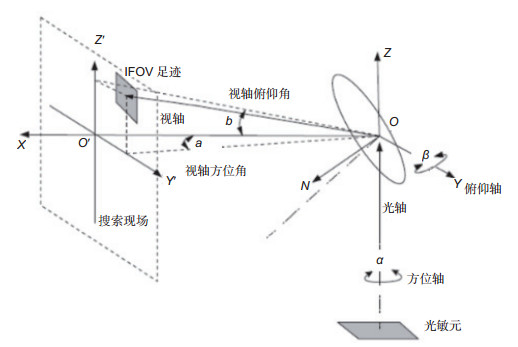
 下载:
下载:
